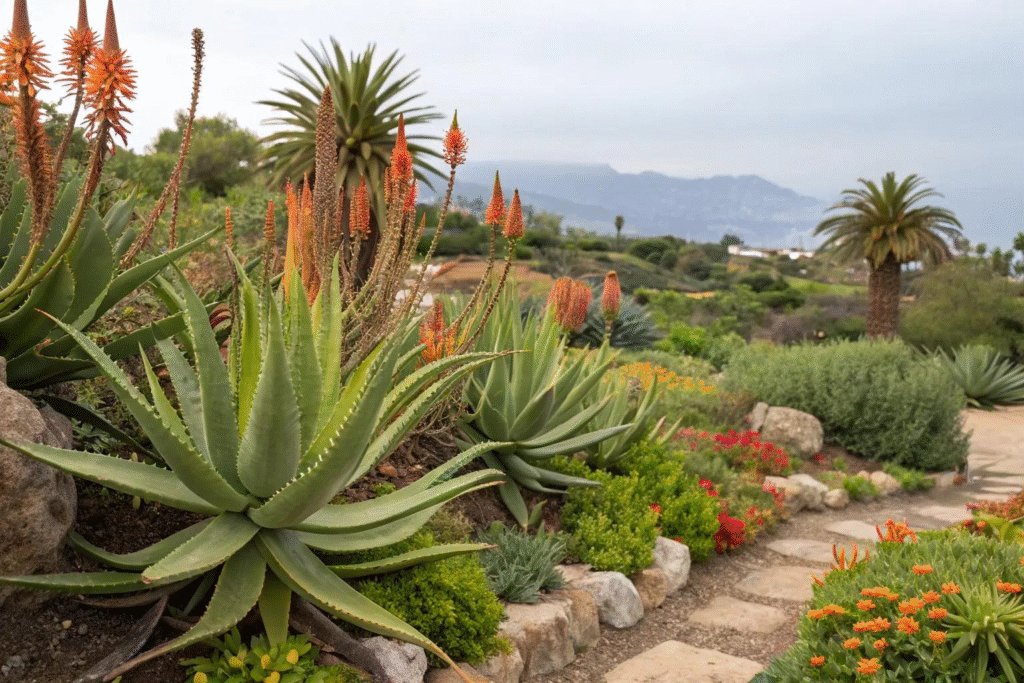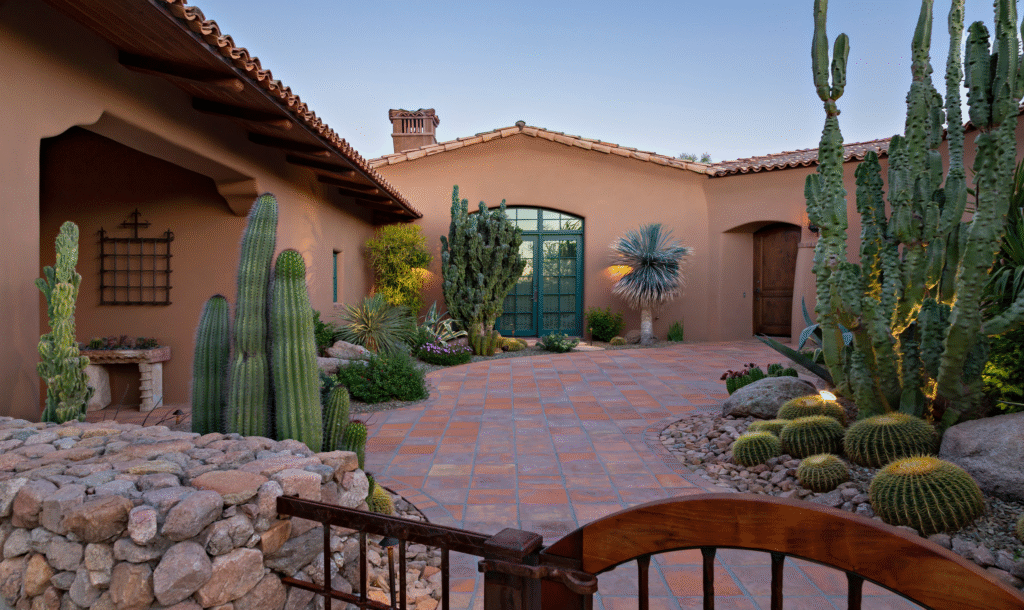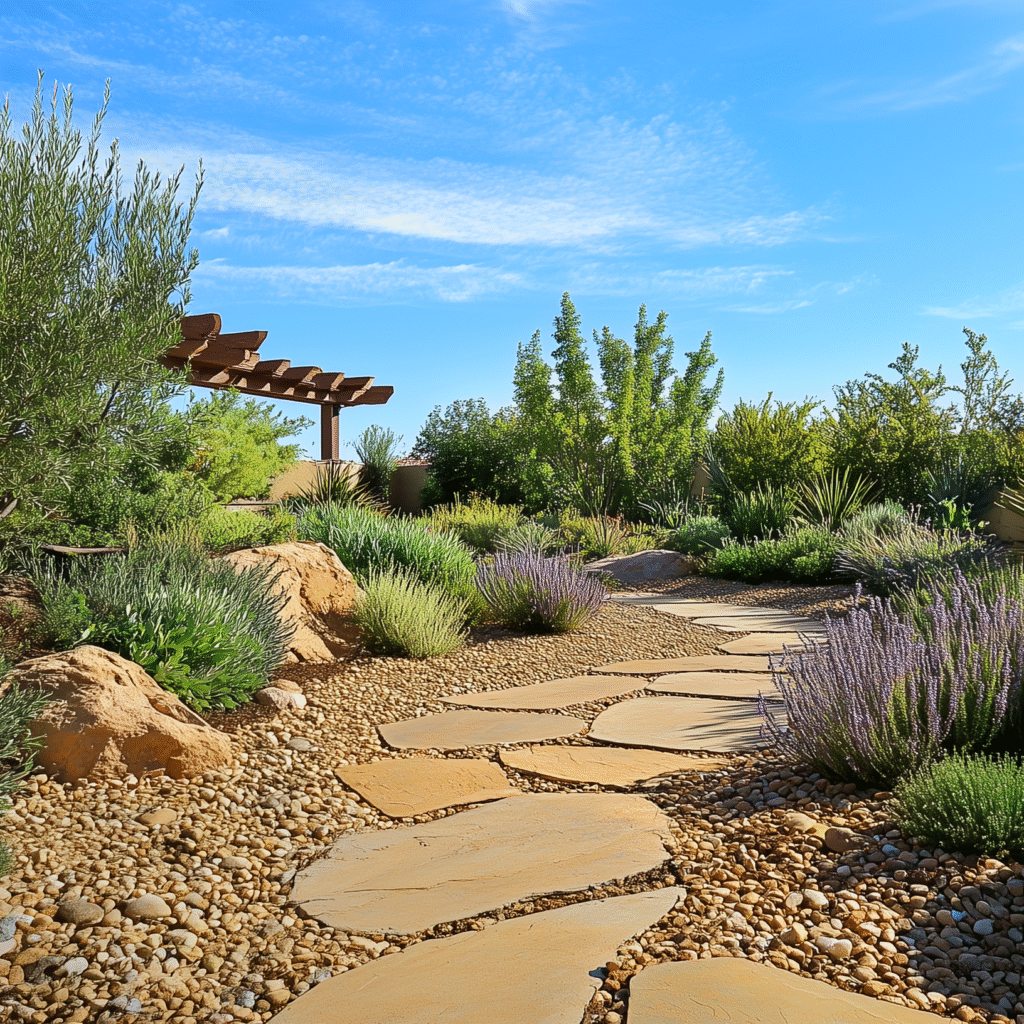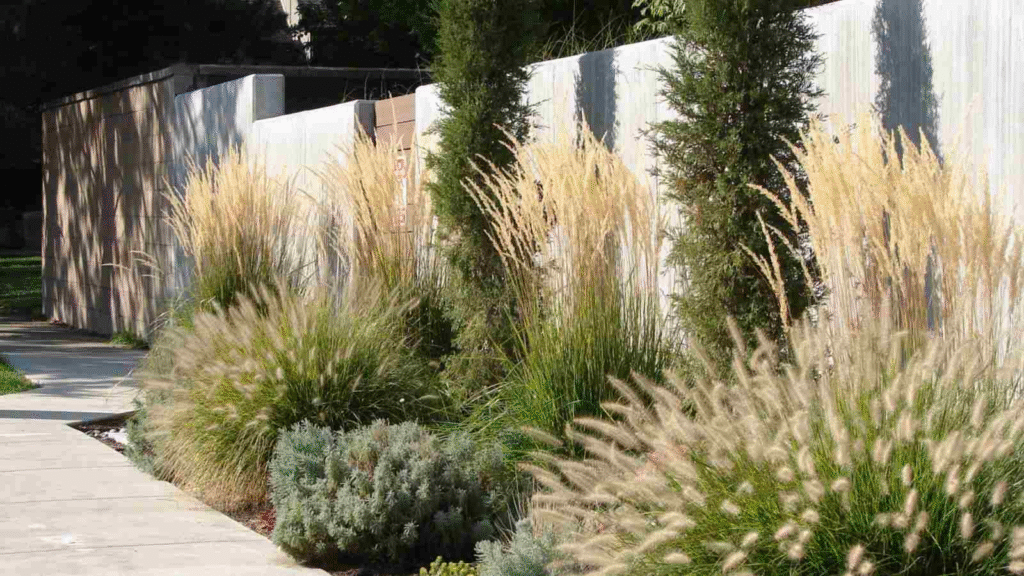If you live in an area where water is scarce or you simply want a sustainable, easy-to-maintain garden, xeriscaping is the perfect solution. This landscaping style combines beauty and practicality—using drought-tolerant plants, gravel, and smart design to create an outdoor space that thrives with minimal water. Whether you prefer modern, desert-inspired, or natural looks, here are 29 xeriscape ideas to inspire your next project.
1. Modern Desert Aesthetic

Combine cacti, agave, and gravel with concrete pavers to achieve a sleek desert-modern look. The contrast of green and gray creates visual harmony without requiring frequent watering.
2. Succulent Borders

Succulents like echeveria and aloe vera create low, lush borders that are both functional and eye-catching. They’re hardy, colorful, and ideal for arid zones.
3. Gravel Pathways

Replace grassy paths with crushed granite or pea gravel. They provide excellent drainage and give your landscape a clean, contemporary feel.
4. Native Plant Groupings

Use plants native to your region—they’re adapted to the local climate and require almost no irrigation once established. This also supports local pollinators.
5. Drought-Tolerant Groundcovers

Instead of grass, use groundcovers like blue fescue, thyme, or sedum. They stay green and lush without heavy watering or mowing.
6. Raised Rock Gardens

Build layered stone beds filled with drought-tolerant plants. This adds depth and texture to your yard while reducing maintenance.
7. Desert-Inspired Courtyard

Create a chic desert courtyard using gravel, succulents, and agave in raised planters. Add warm-toned pavers and terracotta pots to give the space a sun-drenched Mediterranean feel—perfect for both front and backyards.
8. Layered Texture Landscaping

Combine gravel, stones, and drought-resistant plants of varying heights to add dimension and depth. Think tall grasses in the back, mid-sized yuccas or cacti in the middle, and ground-hugging succulents at the edges for a complete, balanced look
9. Ornamental Grasses

Add movement to your xeriscape with fountain grass, blue oat grass, or muhly grass. They thrive in dry climates and sway beautifully in the wind.
10. Desert Bloom Corners

Create pockets of color with desert-friendly flowering plants like red yucca, blanket flower, or penstemon. They attract hummingbirds and butterflies.
11. Gravel Mulching

Use gravel instead of organic mulch to suppress weeds, improve drainage, and reflect light—helping your plants grow strong.
12. Cactus Clusters

Mix tall and short cactus varieties for an architectural, desert-style yard. Place them among large stones for a natural composition.
13. Flagstone Patio
Design a seating area with flagstone and minimal greenery. It’s durable, timeless, and perfect for hot climates.
14. Sculptural Agave Features
Agave plants make excellent focal points. Their bold, symmetrical forms add structure and drama to xeriscaped yards.
15. Desert Oasis Corner
Combine a small water feature with surrounding succulents and palm-like plants for a lush yet low-water look.
16. Drought-Tolerant Shrubs
Use lavender, sage, or rosemary for both scent and resilience. They flourish in full sun and require very little attention.
17. Stepping Stone Paths
Large stepping stones across gravel not only save water but also create a visual journey through your garden.
18. Artistic Rock Arrangements
Use boulders and stones to define plant zones or borders. This gives your landscape a rugged, natural texture.
19. Desert Color Palette
Incorporate warm hues—terracotta, sand, and clay tones—for walls, planters, or gravel. It ties the design to the environment.
20. Container Xeriscaping
For small spaces, create portable xeriscapes in ceramic or concrete planters. Combine succulents and decorative stones for easy upkeep.
21. Lighting for Ambiance
Solar lights or low-voltage LEDs highlight plants and pathways at night, adding a warm, eco-friendly glow.
22. Driftwood Accents
Add driftwood or reclaimed wood for a rustic touch that complements gravel and sand-based landscapes.
23. Minimal Lawn Zones
If you prefer some grass, limit it to small patches using drought-tolerant varieties like buffalo grass or Bermuda grass.
24. Mediterranean Inspiration
Pair olive trees, terracotta pots, and gravel beds to recreate the charm of Mediterranean courtyards.
25. Rainwater Harvesting
Install rain barrels or catchment systems to store water for your xeriscape—great for sustainability and cost savings.
26. Sloped Xeriscape Design
For sloped yards, use terraced stone levels with drought-resistant shrubs to control erosion and save water.
27. Permeable Walkways
Opt for permeable materials like decomposed granite or porous pavers to let rainwater soak into the soil naturally.
28. Minimalist Fence Backdrop
A sleek wooden or metal fence pairs beautifully with xeriscape plants, enhancing contrast and structure.
29. Eco-Friendly Front Yard Makeover
Replace your front lawn with a gravel base, hardy succulents, and strategically placed rocks. It reduces water bills and boosts curb appeal instantly.
Conclusion
Xeriscaping isn’t about giving up beauty for sustainability—it’s about designing smarter. With the right plants, textures, and materials, you can craft a breathtaking yard that saves water and flourishes naturally. Start small, plan carefully, and let nature guide your design.